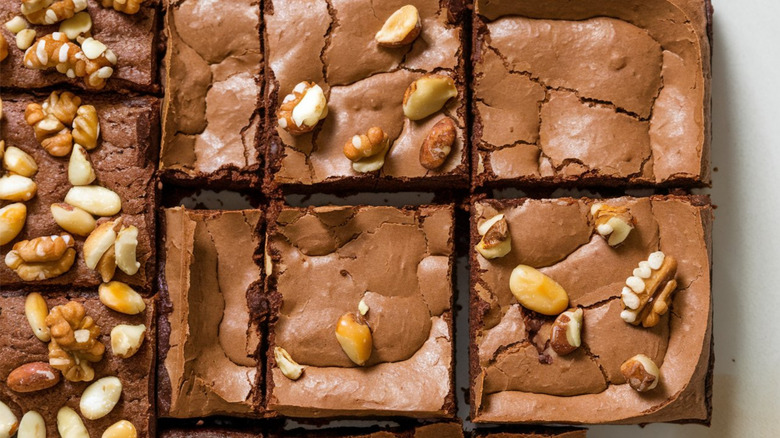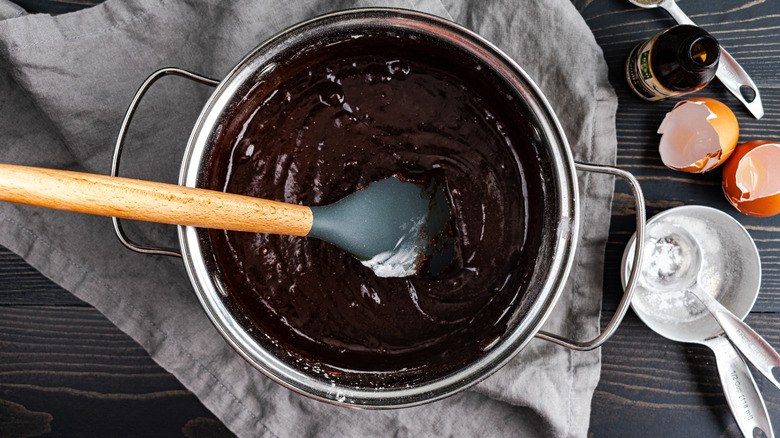If Your Brownies Aren't Crackly On Top, You Might Be Making These Mistakes
A brownie's signature crackly, glossy top often signals a well-made treat. But if your brownies consistently come out with dull, matte surfaces, you're not alone. To figure out what could be going wrong and how to fix it, we chatted with Chloe Hammond, head chef at Asana Lodge in the U.K., about how to get our brownies badass enough to even impress Katharine Hepburn.
One of the key secrets to that shiny, crackly crust is how you treat your eggs and sugar. "If your sugar hasn't dissolved properly into the eggs, or if you haven't beaten them enough, you won't get that glossy film," she advises. "Whisk them together until they're pale [and] thick before folding in the other ingredients." If you skip this step or don't mix long enough, it might be why you're missing out on crackle time. If you want your brownies on the fudgy side, consider adding extra egg yolks.
Hammond offered some other solutions as well: "Using too little sugar, too much flour, or over-mixing once the flour's in can also dull the finish. Sometimes it's simply down to using too much cocoa powder, as they are less likely to shine than those with more melted chocolate." Don't forget to be gentle to your brownie batter. After adding flour and any other dry ingredients, mix just until combined. No need to beat; soft folding is best.
Be very precise with your sugar and eggs
Your first baking prep step should always involve taking your eggs out of the fridge early to please the Brownie Gods. Chef Chloe Hammond agrees: "Cold eggs can actually change the process as they won't emulsify as easily with the sugar and the sugar may not dissolve as well. Room temperature eggs whip more efficiently, giving you that aerated/glossy batter that leads to a crackly finish. Cold eggs are more likely to give you a denser and more uniform top, which some people do like, but it's not that classic brownie look you want."
Hammond has a few more tips and tricks up her sleeve, too. Most importantly, she repeats: "Properly dissolving sugar into the eggs." Sugar actually plays a bigger role here than just sweetness. It's crucial for forming that oh-so-shiny top. The crust is essentially a thin layer of sugar and fat that rises to the surface and crystallizes during baking. Reducing sugar too much can prevent this effect.
Let's not forget the best ingredient in brownies: chocolate. "Using melted chocolate instead of just cocoa powder will help as it adds cocoa butter," suggests Hammond. She goes on to explain that cocoa butter "interacts differently with the sugar and eggs, encouraging that meringue-like layer."
If you've followed all the steps and still don't get that shine, be thankful for the internet. Track down a new recipe that promises glossy, crackly-topped brownies, and make sure it calls for melted chocolate and plenty of sugar!

